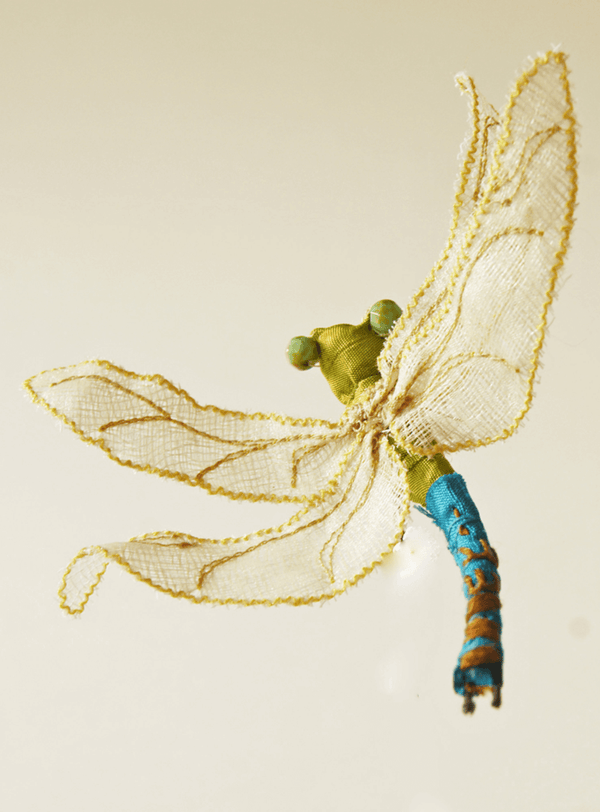Your Cart is Empty

5 Reasons to Fall in Love with Maria Sibylla Merian
August 20, 2013

Who is Maria Sibylla Merian anyway, you ask?
Well, she was a 17th century scientific illustrator, born in Frankfurt in 1647, who painted beautiful and accurate pictures of insects and plants.
What’s so special about that, you say? I’ll give you 5 reasons why this lady was extraordinary.
An Early Start Let’s begin with insects. Back in the 17th century, insects had an even worse reputation than they do now. They were associated with the devil, and thought to arise from inanimate matter, like dust or mud. Well, Maria, at the tender age of thirteen, began painting insects and plants directly from her own collection, encouraged by her step-father, Jacob Marrel, a still-life painter and engraver. She observed her own caterpillars change into beautiful butterflies and moths, and thus she was one of the world’s first entomologists, observing, then educating people about the process of metamorphosis through her images.
Publishing and Earning Her Own Money In 1665, Maria Sibylla married Marrell’s pupil, Johann Andreas Graff, and they had two daughters. They moved to Nuremburg in 1667 where Maria Sibylla continued painting, created designs for embroidery and also gave drawing lessons to daughters of wealthy families. Her activities helped her family financially and gave her access to fine gardens owned by these rich families. She collaborated with her husband on publishing her first two books: New Book of Flowers (1675-80) and Caterpillars, Their Wondrous Transformation and Peculiar Nourishment from Flowers(1679-83). In 1685, She left her husband, moved to Amsterdam, supporting her and her daughters by selling her paintings, and in 1699, undertook a voyage to Suriname, the Dutch Colony in South America.
Voyage to Suriname Familiar with many of the natural history collections owned by the wealthy elites of Amsterdam, Maria Sibylla yearned to learn the secrets of insects’ metamorphoses by observing living creatures instead of inanimate specimens . The city of Amsterdam sponsored a journey to Suriname for Maria Sibylla and her younger daughter, Dorothea. Purely scientific expeditions were unusual at this time and for a woman to undertake such a voyage was even more exceptional. The two women spent two years in the South America “a hot and humid land where swarms of insects are there for the capture”. She used direct observation to capture them in watercolors and engravings, studying, collecting, recording everything about the exotic plants and animals they encountered in her journals. She discovered many animal and plant species as yet unknown to Europeans.
An Original Way of Depicting InsectsThe two women returned to Amsterdam in 1701 and published the first edition of Metamorphosis of the Insects of Suriname in 1705. Sixty full-page engraved plates with text on the facing pages. They also issued a deluxe edition hand-colored by the author and her daughters. As you can see in the images here, the artist depicts the full life-cycle of each species on its particular food plant in a single image, and she was one of the first scientific illustrators to do so.
Recognized by some, Ignored by Others. Linneaus (the father of modern zoological classification) cited her work in his research, but her work was not considered important by 19th century British naturalists who doubted the scientific reliability of work by a woman. Not surprising somehow, right? Well, here’s a good one: in 1669, the Italian biologist Marcello Malpighi published a work in which he described his discovery of the metamorphosis of silkworms into moths. Apparently he hadn’t heard of Maria Sibylla who had documented this phenomenon nearly 10 years earlier in her journal when she was thirteen!
Today this independent and adventurous lady is recognized as one of the world’s most talented scientific illustrators and one of the world’s first entomologists. Her life is an absolute inspiration to me!
Collections:
National Museum of Women in the Arts, Washington, DC
The British Museum, London
Department of Special Collections, Memorial Library, University of Wisconsin-Madison
Academy of Sciences, St Petersburg
There are 95 watercolours by Merian in the Royal Collection, bought in 1755 by George III, when he was Prince of Wales.
A huge thank you to Stacey from BelleMaisonArt for allowing me to post her images to illustrate this post. Please go check out her shop if you’d like to purchase a print. She has 10 prints from the “Metamorphosis Insectorum Surinamensium” published in 1705.
If you’d like to learn more:
Chrysalis: Maria Sibylla Merian and the Secrets of Metamorphosis by Kim Todd (Amazon UK / Amazon US)
SaveSave
Leave a comment
Comments will be approved before showing up.
Also in News

Dear garden
February 22, 2021
And today, she felt agile and unfettered.
No longer leaf-bound.

Lupercalia and lighthearted love bugs
February 12, 2021
Since many of us are nudged towards expressing our love through gifts in mid-February (admittedly, we can use all the gifts we can get, or give ourselves, these days) I thought it might be the moment to offer you a lighthearted embroidery pattern.
Read More
Tell & Show
January 25, 2021
A fear of messing up and wasting the viewers’ time came back each week, until I noticed that it felt fun to get on camera.
Subscribe
Sign up to get the latest on sales, new releases and more …
Recent Articles
- Dear garden February 22, 2021
- Lupercalia and lighthearted love bugs February 12, 2021
- Tell & Show January 25, 2021
- Slow Stitching December 07, 2020
- The Sphinx by Edgar Allen Poe November 01, 2020
- Fabric Moth Tutorial Part 4 October 06, 2020
- Fabric Moth Tutorial Part3 October 06, 2020
- Fabric Moth Tutorial Part 2 October 06, 2020
- Fabric Moth Tutorial Part 1 October 06, 2020
- Bullies, butterflies and other beasts May 07, 2014








